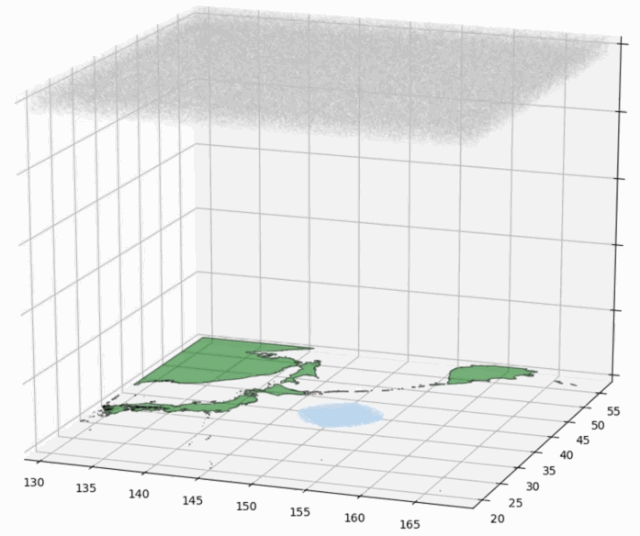GPS networks are already a crucial part of everyday life around the world, but an international team of scientists has found a new, potentially life-saving use for them: tsunami warnings.
Researchers from University College London and universities across Japan studied the ability of the GPS network to detect tsunamis, concluding that instruments can indeed detect the destructive waves from space. They’ve also determined that GPS can provide more detailed information than current detection systems — at an extremely low cost — allowing authorities to issue more accurate warnings in advance of a tsunami’s impact on shore.
Tsunamis are created when ocean water is dramatically displaced by earthquakes, landslides or volcanic eruptions. In the deep ocean, the waves are usually less than a foot high, but as they approach land at speeds up to 500 miles per hour, they grow in height rapidly before inundating a shoreline. GPS networks can detect these waves long before they reach land.
Though the disturbance at the ocean’s surface is slight, it’s enough to create a ripple effect through the atmosphere. As air is pushed upward, an acoustic wave travels all the way to the ionosphere, some 186 miles above the Earth, amplifying in scale as it travels. There, the density of electrons in the ionosphere is reduced by the wave, which directly affects the radio signals sent from GPS satellites to ground receivers. The researchers have developed a way to interpret the changes in radio signals to glean critical information about tsunamis.

Image Credits: University College London
Currently, tsunami warnings are issued based on seismic activity. The warnings are not necessarily very accurate, only indicating that a tsunami may happen at some point in the near future, but providing little other detail.
“In 2011, Japan’s warning system underestimated the [Tōhoku] wave’s height. A better warning may have saved lives and reduced the widespread destruction that occurred, allowing people to get to higher ground and further away from the sea,” Professor Serge Guillas of UCL Statistical Science and the Alan Turing Institute and senior author of the paper said in a press release. “Our study, a joint effort by statisticians and space scientists, demonstrates a new method of detecting tsunamis that is low-cost, as it relies on existing GPS networks, and could be implemented worldwide, complementing other ways of detecting tsunamis and improving the accuracy of warning systems.”
The researchers suspect that if GPS data had been used during the Tōhoku disaster, an accurate tsunami warning could have been issued at least 10 minutes before the wave reached land, potentially giving more people time to prepare for impact.
The team believes that with further research, they will be able to more precisely determine the size and shape of tsunamis based on GPS radio signals.
“From my experience of working for the Japanese government in the past and seeing the damage caused by the tsunami, I believe that if this research comes to fruition, it will surely contribute to saving lives,” said Ph.D. researcher Ryuichi Kanai of UCL Statistical Science and the Alan Turing Institute, who co-authored the paper.
The researchers’ study was published in the journal “Natural Hazards and Earth System Sciences” last month.















 English (US) ·
English (US) ·